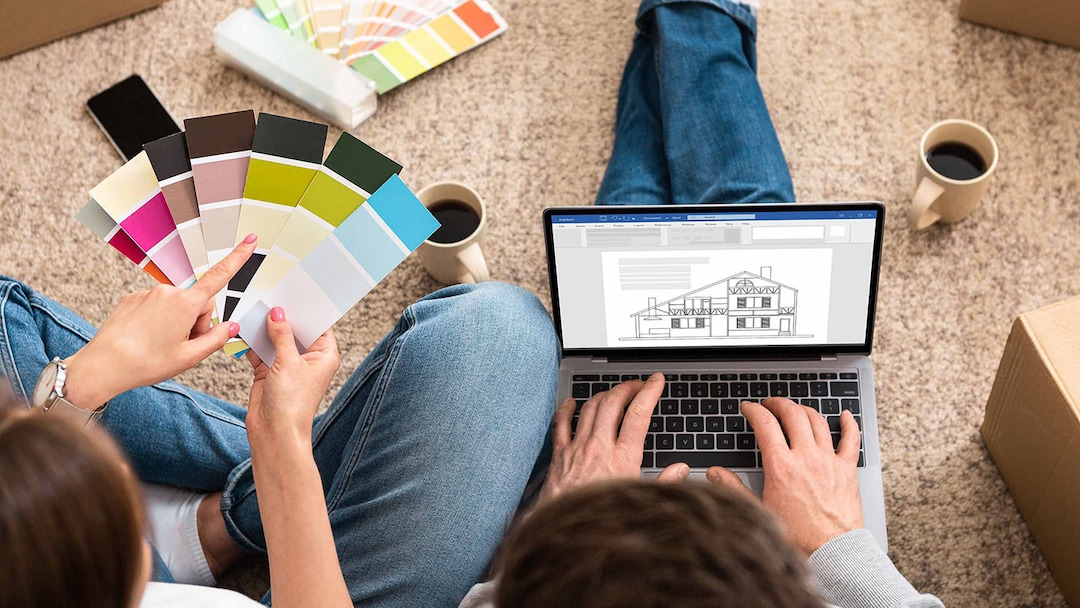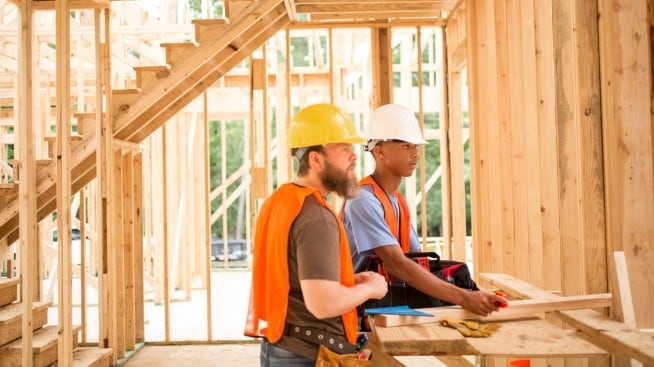The contemporary house guide: Definition, features and design

Contemporary homes, one of the newer architectural styles on the housing market, may offer their owners innovative designs, a harmonious blend of form and function, and a canvas for self-expression.
Let's explore contemporary houses, from their main features to decorating insights, and discuss these unique living spaces that resonate with the lifestyle of today.
What is a contemporary home?
A contemporary home is a relatively new style that reflects current architectural and design trends. Designed to embrace simplicity, aesthetics and open spaces, these homes create a functional and enjoyable living space. While contemporary houses have their specific qualities and traits, they are highly adaptable and may commonly include features from other styles, such as boho, Art Deco or Scandinavian.
Contemporary house features
The contemporary design could be tailored to the needs and wants of the homeowner, and it may seem less strict and demanding than some other styles. Still, certain characteristics distinguish contemporary homes from their counterparts. Those include:
- Clean lines
- Natural elements
- Asymmetrical construction
- Open floor plan
- Large windows
- Neutral colors
- Eco-friendly solutions
Contemporary vs. modern homes: What's the difference?
Some homebuyers find the terms "contemporary house" and “modern house" confusing and too alike. While these two styles do have certain similarities, there are differences in their origins and architectural elements.
To start, let's talk about history. The modern style originates from the 19th century, and it dominated the architectural landscape in Europe and the U.S. from the 1930s to the 1960s. Contemporary architecture appeared somewhat later, inspired by the latest trends, including modernism and mid-century modern.
Looking further into the design elements, modern homes are said to have a more established set of rules, while contemporary design is ever evolving and incorporates features that are of the moment. For example, both styles tend to integrate geometry, clean lines and generous use of glass. Yet, modernism may greatly emphasize the building's practicality and seem somewhat harsh. Contemporary design, on the contrary, might bring up softer textures and playful elements of decor to reflect its owner's personality and evoke a sense of warmth.
Pros and cons of contemporary houses
Just like other architectural styles, contemporary homes may have their advantages and disadvantages. Taking the time to explore this style's pros and cons could help homebuyers decide whether contemporary houses are right for them.
Pros of contemporary houses
- Unique and customizable designs: Thanks to the nature of contemporary houses, it’s fairly easy for homebuyers to incorporate components from other interior design styles.
- Efficient use of space: Minimalism and open floor plans are encoded into the essence of contemporary design. These traits may allow for the maximization of living area efficiency and give inhabitants the feeling of spaciousness.
- Eco-friendly features: This architectural style allows for stylistically effortless incorporation of various green solutions, including sustainable materials, solar panels and energy-efficient appliances.
Cons of contemporary houses
- High building costs: The materials and features used for construction and design may potentially result in higher project costs.
- Challenging to combine with certain styles: The aesthetics of contemporary houses might not fit organically with features common in some styles, such as rustic or farmhouse. So, homebuyers who fancy those styles may want to keep that in mind before committing to a contemporary home.
What to remember when designing a contemporary house
Even though the contemporary style is somewhat fluid, homeowners who might want to incorporate this look into their space may be able to use some tips to ensure their design is on point. Here are some ideas to consider when constructing and furnishing a contemporary-style home:
1. Choosing colors wisely
Typically, contemporary design is known for using neutral colors, such as beige, light gray or tan, which may easily become a blank canvas for other elements. Other staples are black and white, which could in defining space or making the room feel airy and open. While a pop of color is encouraged (after all, a contemporary home may be an excellent choice to showcase its owner's personality), it may help to keep those at bay when working on contemporary designs.
2. Embracing geometrical features
The use of various geometric elements is another feature that sets contemporary homes apart from their traditional predecessors. Recognized for their asymmetry, these types of structures add visual dynamism and this characteristic to customize space according to the owner's needs. Some shapes likely to be found in both the exterior and interior design of contemporary houses combine sharp angles, such as cubes and rectangles, and curves to balance them out.
3. Combining different materials
This type of style may not be the most colorful and flamboyant as textures and materials are likely to run the show. For contemporary designs, it's common to mix textured elements (shaggy rugs or carved wood) with smooth or glossy finishes. Wood, stone, concrete and glass may be some of the typical materials found in contemporary houses.
4. Paying attention to decor
While contemporary designs embrace minimalism, there's room for some thought-out pieces of decor. Generally, these types of homes are likely to mirrors, as they reflect light and create an illusion of space, and plants, as they add some color, simultaneously providing a connecting link to nature. When decorating the place, it could help to keep in mind that contemporary style favors minimalism, clean forms and balance between the elements.
In summary
Contemporary homes, with their sleek lines, soft colors and a blend of materials, offer a strong connection to the surrounding environment and may become a peaceful oasis to their owners. When shopping for a contemporary home, it may help to weigh the pros and cons of this unique style and seek professional help to make the journey toward homeownership as easy as possible.



